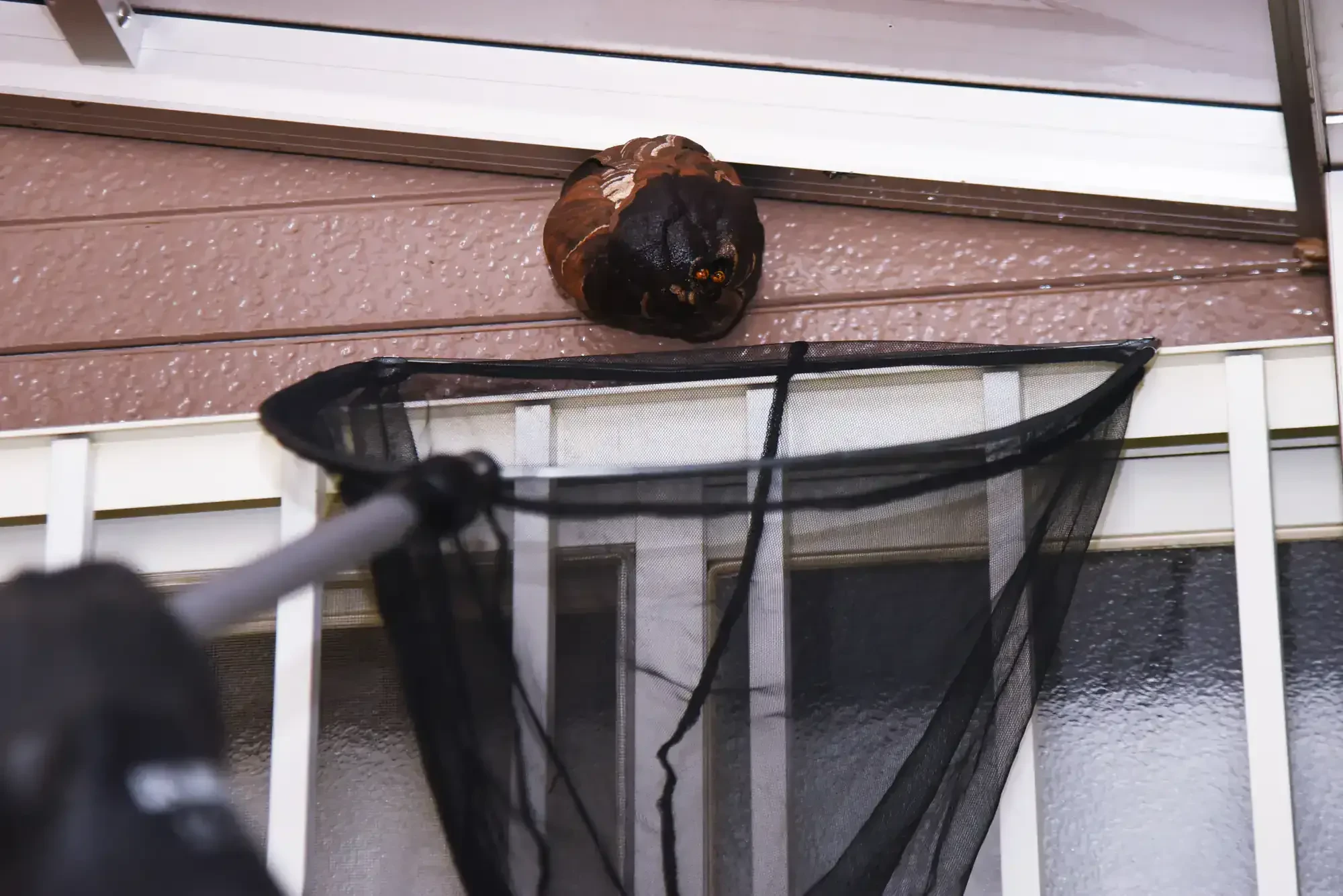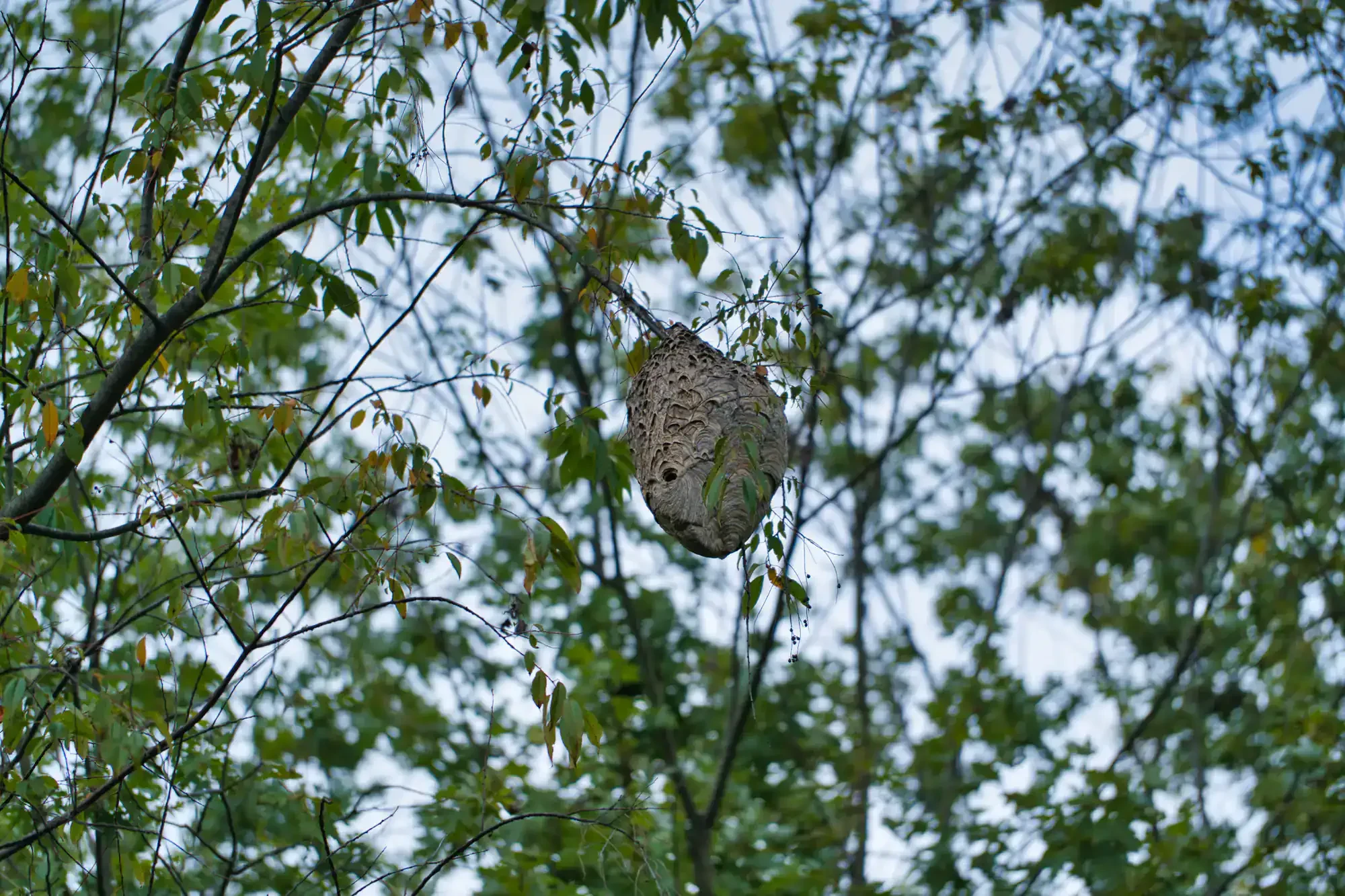
Hear from Our Customers

You’ll walk your property without looking over your shoulder. Your kids can play outside again without dodging aggressive wasps around every corner.
Late summer yellow jacket colonies hit their peak aggression in Vernon, with thousands of workers defending nests you can’t even see. These aren’t the docile insects from spring—they’re territorial, quick to swarm, and capable of multiple stings that pack serious venom.
Once we eliminate the nest completely, you get your outdoor space back. No more interrupted barbecues, no more fear every time you mow the lawn, and no more worrying about surprise encounters near your deck or garden beds.
We’ve been protecting Vernon families since 2005. Roger brings 26 years of hands-on experience dealing with Michigan’s aggressive yellow jacket populations.
We’re not another corporate pest control company cycling through part-time technicians. You get the same experienced professional every time—someone who knows your property and understands how yellow jackets behave in our local climate.
Vernon’s rural setting with mature trees, outbuildings, and established landscaping creates perfect nesting conditions. We’ve seen colonies in everything from abandoned rodent burrows to wall voids in century-old farmhouses. That local knowledge makes the difference between finding every nest and missing the one that matters.

We start with a thorough property inspection to locate all active nests. Yellow jackets in Vernon often build underground colonies in old animal burrows or inside structural voids you’d never suspect.
Our technician uses professional-grade protective equipment and specialized treatments designed for each nest type. Underground colonies get dust applications that eliminate the entire population, while aerial nests require different techniques to prevent defensive swarming.
We treat during optimal times—early morning or evening when most workers are inside the nest. This ensures maximum elimination while minimizing the risk of scattered survivors rebuilding elsewhere on your property. After treatment, we remove the nest structure and seal entry points to prevent reestablishment.

Ready to get started?
You get comprehensive nest elimination, not just a quick spray treatment. We locate hidden underground colonies that other companies miss, treat aerial nests without triggering dangerous swarms, and remove nest structures to prevent reuse.
Vernon’s peak yellow jacket season runs from late August through September, when colonies reach maximum size and aggression. During this critical period, a single disturbed nest can release hundreds of defensive workers capable of pursuing threats over considerable distances.
Our service includes identification of nest entry points, treatment of the entire colony structure, and follow-up inspection to ensure complete elimination. We also provide guidance on preventing future nesting around common Vernon property features like wood piles, unused outbuildings, and mature landscaping where queens typically establish new colonies each spring.

Yellow jackets reach peak aggression in late August and September when colonies contain thousands of workers. During this period, nests are at maximum size and workers become increasingly territorial as natural food sources decline.
Unlike spring and early summer when yellow jackets focus on hunting other insects, late season workers actively scavenge for sugary foods around homes. This brings them into direct conflict with human activities like outdoor dining, garbage disposal, and yard maintenance.
The danger intensifies because late summer yellow jackets can sting multiple times without dying, and their venom is significantly more potent than bee stings. A single disturbed nest can trigger a swarm response involving hundreds of aggressive workers.
In Vernon, yellow jackets commonly nest underground in abandoned rodent burrows, particularly around mature trees and established landscaping. These ground nests often go undetected until someone accidentally steps near the entrance, triggering an immediate swarm response.
Aerial nests appear in wall voids, attic spaces, gaps around siding, and underneath eaves or deck structures. Rural properties with outbuildings, wood piles, and older structures provide numerous nesting opportunities that yellow jackets readily exploit.
The most dangerous locations are ground nests in high-traffic areas like walkways, garden beds, or lawn areas where family members and pets regularly spend time. These hidden colonies can contain thousands of workers by late summer, making accidental encounters extremely hazardous.
Most yellow jacket nests can be eliminated within 24-48 hours using professional treatment methods. However, complete elimination depends on nest location, colony size, and weather conditions that affect worker activity patterns.
Underground nests typically respond faster to dust applications, while aerial nests in wall voids may require multiple treatment approaches. We schedule treatments during early morning or evening hours when maximum numbers of workers are inside the nest structure.
Follow-up inspection occurs within one week to confirm complete elimination and remove nest structures. If any activity remains, we return at no additional cost until the problem is completely resolved. Most Vernon properties see immediate reduction in yellow jacket activity within hours of treatment.
DIY yellow jacket removal is extremely dangerous, especially during peak season when colonies contain thousands of aggressive workers. Disturbing a nest without proper protective equipment and treatment methods often triggers massive swarm responses that can result in dozens of painful stings.
Store-bought sprays typically fail to eliminate entire colonies and often make surviving workers more aggressive. Underground nests are particularly hazardous because homeowners can’t see the full extent of the colony or predict swarm behavior patterns.
Professional removal uses specialized protective gear, targeted treatment methods, and timing strategies that minimize risk while ensuring complete elimination. The cost of professional service is minimal compared to potential medical expenses from severe sting reactions or incomplete elimination requiring multiple treatments.
Yellow jacket colonies don’t reuse old nests, but new queens often establish colonies in the same general areas where previous nests were successful. Vernon properties with favorable conditions like mature landscaping, outbuildings, and protected nesting sites tend to see repeated yellow jacket activity.
Queens overwinter in protected locations and emerge in spring to scout for suitable nesting sites. Areas that previously supported large colonies often provide the same attractive features—food sources, water access, and structural protection—that new queens seek.
Preventive treatment in early spring can intercept queen establishment before colonies develop. We also identify and modify conditions that attract nesting activity, such as sealing structural gaps, managing food sources, and monitoring high-risk areas around your Vernon property.
For normal sting reactions, immediately wash the area with soap and water, apply ice to reduce swelling, and monitor for signs of allergic response. Multiple stings or stings near the face and throat require immediate medical attention regardless of known allergies.
Seek emergency medical care if the person experiences difficulty breathing, swelling of face or throat, rapid pulse, dizziness, or widespread skin reactions. Yellow jacket venom can trigger severe allergic reactions even in people with no previous sting sensitivity.
Remove the person from the area quickly to prevent additional stings, as yellow jackets release alarm pheromones that attract more workers to the threat. Never attempt to treat or remove the nest yourself after a sting incident—professional elimination prevents future encounters and protects your family from additional dangerous exposures.